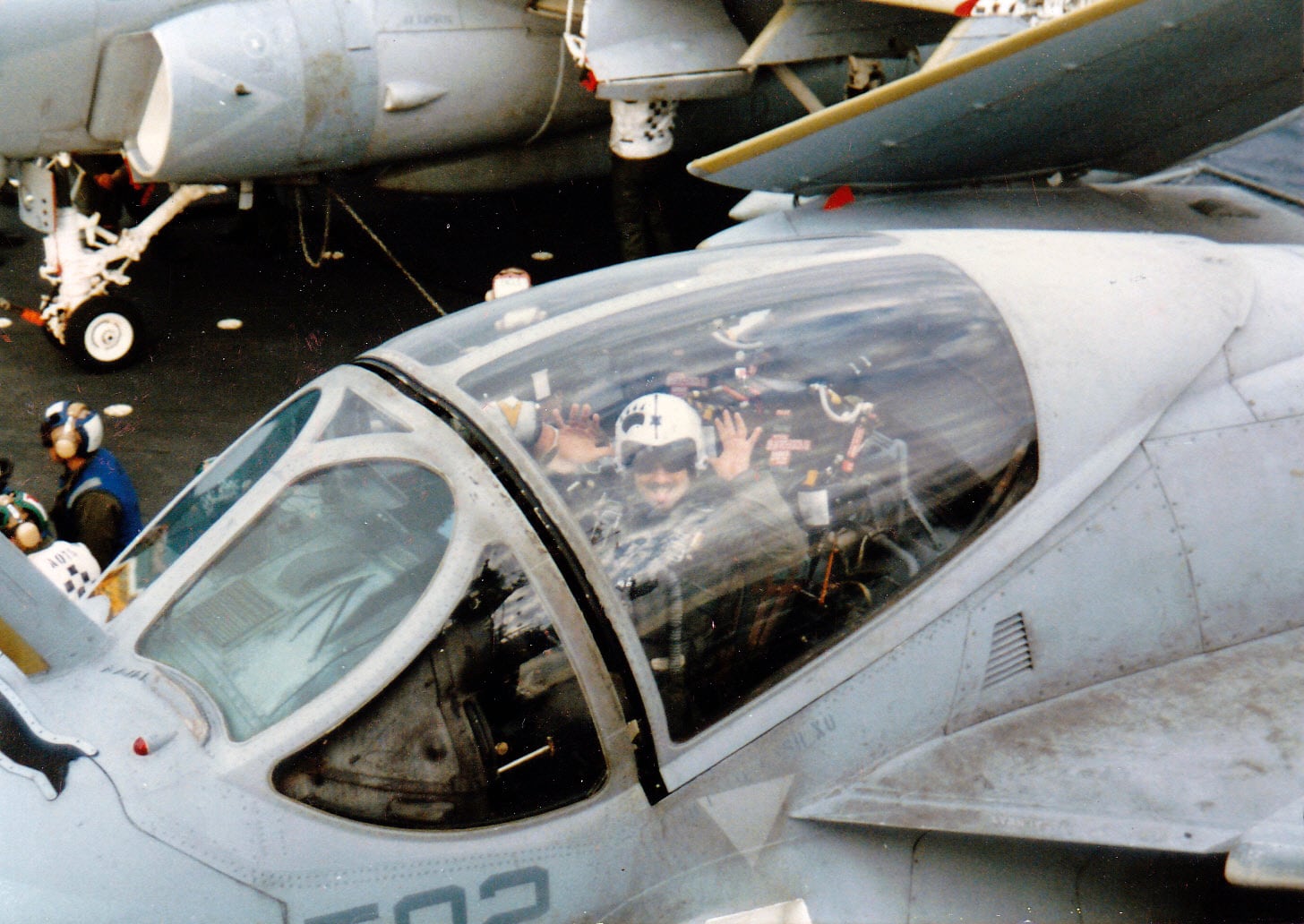The Air Force is expanding its study of whether service members who worked with nuclear missiles have had unusually high rates of cancer after a preliminary review determined that a deeper examination is needed.
The initial study was launched in response to reports that many who served are now ill. The Air Force isn’t making its initial findings of cancer numbers public for a month or so, but released its initial assessment Monday that more review is necessary.
RELATED

“We’ve determined that additional study is warranted” based on preliminary analyses of the data, said Lt. Col. Keith Beam, one of several Air Force medical officers who updated reporters on the service’s missile community cancer review.
The findings are part of a sweeping review undertaken by the Air Force earlier this year to determine if missileers — the launch officers who work underground to operate the nation’s silo-launched nuclear missiles — were exposed to unsafe contaminants. The review began after scores of those current or former missile launch officers came forward this year to report they have been diagnosed with cancer.
In response, medical teams have conducted thousands of tests of the air, water, soil and surface areas inside and around each of the Air Force’s three nuclear missile bases: Malmstrom Air Force Base in Montana, Minot Air Force Base in North Dakota and F.E. Warren Air Force Base in Wyoming.
At a Dec. 1 briefing with reporters to discuss its findings ahead of the release, the Air Force said none of the more than 2,000 samples of air, water and soil at either the Montana or Wyoming bases came back showing harmful levels of contamination. The service has not yet published results from the North Dakota base.
However, four locations in the underground launch control capsules where the missileers worked had unsafe levels of PCBs — oily or waxy substances that have been identified as a likely carcinogen by the Environmental Protection Agency. Decontamination of those sites is underway.
But while that data may show that the air, water and soil are safe now, it still raises questions as to what earlier missile launch officers may have breathed in or been exposed to in the past. The silos and underground control capsules were dug during the 1960s and much of that infrastructure hasn’t been updated since.
“We can’t go back and test to fully quantify what was there in the ‘90s or 2000s, or even the ‘50s and ‘60s,” said Col. Tory Woodard, commander of the U.S. Air Force School of Aerospace Medicine. “But we can use this data to help us inform what those risks might have been.”
RELATED

The expanded Air Force study will look not just at missileers and maintainers, but at all who support the ICBM mission, from security forces to cyber defenders.
Environmental sampling efforts are also slated to expand to California’s Vandenberg Space Force Base, which test-launches unarmed ICBMs throughout the year, in early 2024, the Air Force said.
Woodard said between the sampling and further data review, it will help the Air Force “build a risk profile of what past members may have been exposed to.”
To help with that, the Air Force is expanding its review of medical records to try to account for as many service members as possible. The initial dataset only goes back to 2001, when DOD began using electronic medical records. But the group they hope to capture includes any personnel who worked with military nuclear missiles going back to 1976, and will add Department of Veterans Affairs data and state cancer registries.
“The limitations that were discovered with this initial dataset is driving us to open the aperture to ensure that we are capturing as many cases as possible, particularly among those who previously served in missile-related career fields,” the Air Force said in a statement.
In all, the study hopes to capture data on all missile community members who served from 1976 to 2010.
The study has also prompted the Air Force to track occupational hazards at missile bases differently than it has in the past.
Previously, the School of Aerospace Medicine staffers who perform occupational safety checks at bases across the Air Force treated missile bases as administrative duty locations, meaning they weren’t as closely scrutinized for job safety as industrial shops were, Woodard said.
As it finds evidence of hazardous materials at nuclear missile sites, the military will begin logging those potential exposures in airmen’s electronic health records.
“This process will change ... how we evaluate and treat those jobs in the future,” Woodard said.
RELATED

The Air Force response is far different this time than it has been in the past, when earlier generations of missile launch officers raised concerns about illnesses among their community. For years, the missileers were told in multiple Air Force reviews that there was no cause for concern.
But the issue received significantly more attention this year as scores of current or former officers or their surviving family members joined forces and went public with self-reported data of their cancers. In particular, 41 of those launch officers self-reported diagnoses of non-Hodgkin lymphoma, a blood cancer. Those families have formed an organization, called the Torchlight Initiative, to heighten awareness on the issue.
While the Air Force review is looking at a broader set of 14 common cancers, the number of self-reported non-Hodgkin lymphoma cases is striking because the community of missile launch officers is very small. Nationwide rates of the condition are 18.7 per 100,000 people, according to the National Cancer Institute.
For comparison, there have only been about 21,000 who have served as missileers since the 1960s, according to the Torchlight Initiative. The entire missile community population — to include maintainers to fix the warheads and security forces who patrolled the sites — is likely about 84,000, the Air Force said.
In a statement, the Torchlight Initiative said that “despite the air, water, and soil findings, the PCB results are concerning. The missile community continues to struggle with disproportionate rates of cancer. The community is in desperate need of appropriate exposure documentation so they can get the care they need.”
The heightened response in the Air Force is part of an overall sea change within the Department of Defense and Department of Veterans Affairs to look more bluntly at the issue of exposure to toxic contaminants, such as exposure to radiation or harmful air particles in military occupations.
It often still requires a grassroots effort, whether by the Torchlight Initiative, or by Iraq and Afghanistan veterans who breathed in toxic fumes from trash-burning pits on base, or by individual pilots drawing attention to numbers of sickened aviators who all flew the same airframe, such as the Navy’s E-2 Hawkeye radar plane, to drive further action on military cancer clusters.
Perhaps the biggest difference from years past in the Air Force’s missileer community is that a number of those diagnosed officers are still serving, and many of the officers leading the missile community now have ties to former missileers who have been diagnosed with or have died of cancer.
“I personally know a number of the folks who are non-Hodgkin lymphoma survivors, so a lot of empathy and a lot of desire to understand better,” said Col. Barry Little, commander of the 341st Missile Wing at Malmstrom Air Force Base. “We’re leaving no stone unturned.”
Air Force Times Editor Rachel S. Cohen contributed to this story.
Tara Copp is a Pentagon correspondent for the Associated Press. She was previously Pentagon bureau chief for Sightline Media Group.





